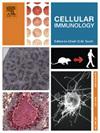M6A甲基转移酶zc3h13介导的GPX4 mRNA稳定性下调抑制肾透明细胞癌(KIRC)的进展
IF 2.9
4区 医学
Q2 CELL BIOLOGY
引用次数: 0
摘要
肾透明细胞癌(KIRC)是致死性泌尿生殖系统疾病之一,是最常见的恶性肾脏肿瘤。已有研究表明,RNA修饰n6 -甲基腺苷锌指型含13 (ZC3H13)在KIRC中起着至关重要的调控作用。然而,ZC3H13在KIRC中的生物学作用和机制尚不明确。方法采用timer、ENCORI、UALCAN数据库分析ZC3H13的表达特征及预后意义。采用实时定量聚合酶链反应(RT-qPCR)和western blot检测ZC3H13和谷胱甘肽过氧化物酶4 (GPX4) mRNA和蛋白表达水平。采用细胞计数试剂盒-8 (CCK-8)、5-乙基-2′-脱氧尿苷(EdU)和流式细胞术检测细胞增殖和凋亡。异种移植瘤模型分析了ZC3H13对肿瘤生长的影响。超氧化物歧化酶(SOD)活性、谷胱甘肽(GSH)水平和活性氧(ROS)采用专用试剂盒检测。采用试剂盒检测三磷酸腺苷(ATP)水平。流式细胞术分析线粒体膜电位变化。结果KIRC组织和细胞中zc3h13表达降低,GPX4表达升高。此外,过表达ZC3H13在体外抑制KIRC细胞增殖、促进细胞凋亡、氧化应激、破坏线粒体功能,在体内阻断肿瘤生长。在分子水平上,ZC3H13可以通过m6A甲基化降低GPX4 mRNA的稳定性和表达。结论zc3h13以m6a依赖的方式破坏GPX4 mRNA的稳定性,从而抑制KIRC细胞增殖、加速细胞凋亡、氧化应激、损害线粒体功能,为KIRC提供了一个有希望的治疗靶点。本文章由计算机程序翻译,如有差异,请以英文原文为准。
M6A methyltransferase ZC3H13-mediated downregulation of GPX4 mRNA stability inhibits the progression of kidney renal clear cell carcinoma (KIRC)
Background
Kidney renal clear cell carcinoma (KIRC) is one of the fatal genitourinary diseases and accounts for most malignant kidney tumors. Previous studies have indicated that RNA modification N6-methyladenosine zinc-finger CCCH-type containing 13 (ZC3H13) plays a vital regulatory role in KIRC. However, the biological role and mechanism of ZC3H13 in KIRC are poorly defined.
Methods
TIMER, ENCORI, and UALCAN databases were used to analyze the expression feature and prognostic significance of ZC3H13. ZC3H13 and Glutathione Peroxidase 4 (GPX4) mRNA level and protein level were determined using real-time quantitative polymerase chain reaction (RT-qPCR) and western blot. Cell proliferation and apoptosis were measured using Cell Counting Kit-8 (CCK-8), 5-ethynyl-2′-deoxyuridine (EdU), and flow cytometry. A xenograft model analyzed the effects of ZC3H13 on tumor growth in vivo. Superoxide dismutase (SOD) activity, Glutathione (GSH) level, and Reactive oxygen species (ROS) were determined using special assay kits. Adenosine triphosphate (ATP) level was detected using kit. Mitochondrial membrane potential changes were analyzed using flow cytometry.
Results
ZC3H13 was decreased, and GPX4 was increased in KIRC tissues and cells. Moreover, overexpressing ZC3H13 hindered KIRC cell proliferation, promoted apoptosis, oxidative stress, and disrupted mitochondrial function in vitro, as well as blocked tumor growth in vivo. At the molecular level, ZC3H13 could decrease the stability and expression of GPX4 mRNA via m6A methylation.
Conclusion
ZC3H13 destabilizes GPX4 mRNA in an m6A-dependent manner, thereby repressing KIRC cell proliferation, expediting apoptosis, oxidative stress, and impairing mitochondrial function, which provided a promising therapeutic target for KIRC.
求助全文
通过发布文献求助,成功后即可免费获取论文全文。
去求助
来源期刊

Cellular immunology
生物-免疫学
CiteScore
8.20
自引率
2.30%
发文量
102
审稿时长
30 days
期刊介绍:
Cellular Immunology publishes original investigations concerned with the immunological activities of cells in experimental or clinical situations. The scope of the journal encompasses the broad area of in vitro and in vivo studies of cellular immune responses. Purely clinical descriptive studies are not considered.
Research Areas include:
• Antigen receptor sites
• Autoimmunity
• Delayed-type hypersensitivity or cellular immunity
• Immunologic deficiency states and their reconstitution
• Immunologic surveillance and tumor immunity
• Immunomodulation
• Immunotherapy
• Lymphokines and cytokines
• Nonantibody immunity
• Parasite immunology
• Resistance to intracellular microbial and viral infection
• Thymus and lymphocyte immunobiology
• Transplantation immunology
• Tumor immunity.
 求助内容:
求助内容: 应助结果提醒方式:
应助结果提醒方式:


